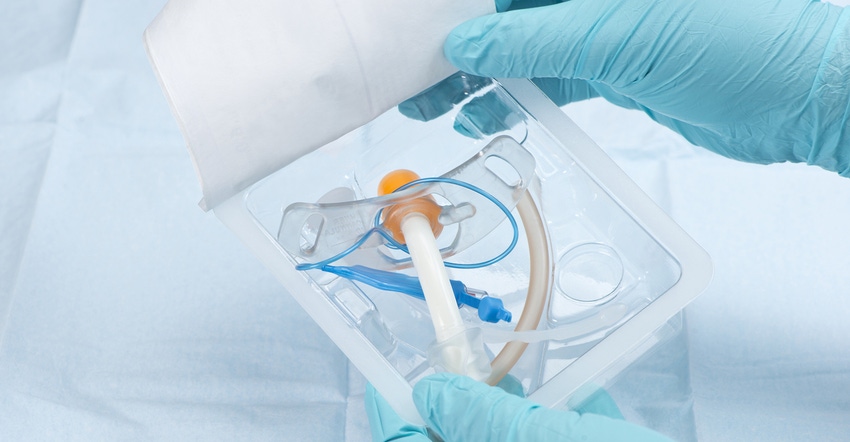Engineers need to have a better understanding of how packaging is actually being used in the field and design packaging systems accordingly. That’s part of the Kilmer Innovations in Packaging group’s guiding principles.
December 3, 2020

A great deal of thought and engineering goes into the design of medical packaging, from material selection and rigorous testing to sterility assurance. But consider this scenario, as outlined by Rod Patch, Senior Director, Johnson & Johnson, during his presentation, “Driving Innovation in Medical Device Packaging,” on Dec. 2 at Virtual Engineering Week.
|
Rod Patch, Senior Director, Johnson & Johnson. |
A patient is on a gurney in an ambulance that is screaming down the road. A healthcare worker has one hand on the patient to keep him stable him while trying to pry open a packaging system with the other hand. It can't be done single handedly. How will he get the package open? With his teeth. “No engineer thought that was something they needed to consider when designing the package,” said Patch. The moral of the story? Design engineers need to have a better understanding of how packaging is being used in the field and maybe design a better packaging system for that use case, suggested Patch. That’s the purpose behind the recently formed Kilmer Innovations in Packaging, which Patch profiled during his session. Founded in October 2019, the group has recruited more than 150 members along the sterility assurance value chain from medical device manufacturers to distributors and users in the healthcare system.
Improving patient outcomes.
If you’re active in the medical packaging space, the name Kilmer may ring a bell. Fred Kilmer worked at Johnson & Johnson from the late 1800s until the early 1930s, where he ultimately became the director of sterility assurance. In fact, he is credited with being the “father of sterility assurance,” said Patch. The group thought it appropriate to “take the Kilmer name and recognize the thought leader that he is,” said Patch.
Improving patient outcomes is a touchstone of the Kilmer Innovations in Packaging group. While it may seem like an overreach, there are a number of ways that packaging can contribute, according to Patch. For example, you might ask if the labeling is providing adequate information for the device it contains. “One function of a packaging system is to communicate,” said Patch. You might also ask if the packaging system is providing "robust functionality of aseptic transfer?" If your packaging can help to reduce healthcare associated infections even by a minute percentage, that has an enormous impact on the patient who is not infected, noted Patch.
To achieve these goals, the Kilmer Innovations in Packaging group has established four programs:
Aseptic presentation. This topic lacks in evidence, publication, and consistency, according to Patch. “Opinions vary in the world from country to country, region to region, market to market, and even within a region in terms of operating or procedural norms,” said Patch. “The sterile barrier is universally adopted as a concept but is not universally adopted as a practice.”
Last 100 yards. There is now a general understanding of the hazards of the last mile—what happens between the time a device leaves the distribution center and arrives at its destination—and how to test for them. “We’ve solved that,” said Patch. It’s what happens after the product has arrived at its destination where “we have a low level of knowledge.” There are numerous touch points within the last 100 yards of a product’s journey—from the loading dock to storage to point of care—that need our attention, said Patch. To better understand this process requires greater collaboration with practitioners and other end users, stressed Patch. The scenario of the practitioner in the ambulance is one illustration of that.
Let’s speed things up. The essential focus of this program is finding ways to leverage knowledge within companies and make it more broadly available for use. “Many companies have information on a problem they have solved that is stored in their vaults and no one else knows about." Several companies may have solved a specific problem many times over but are loathe to share that knowledge. Making it available to industry at large is at the core of speeding things up, explained Patch.
Sustainability. “Polymers are heavily used in healthcare packaging and they have always been connected with sustainability, so it is quite right to be mindful of the packaging’s end-of-use state," said Patch. Sustainability in design and practice, being mindful of communities and the climate are things that have not always been a central part of the conversation among medical packaging designers. They should be, said Patch.
If this initiative strikes a chord with you, if you are passionate about medical packaging innovation, Kilmer Innovations in Packaging wants to hear from you. The best way to get in touch is through the group’s LinkedIn page.
About the Author(s)
You May Also Like





